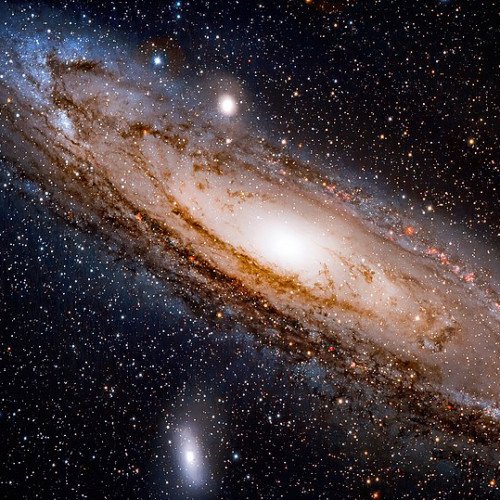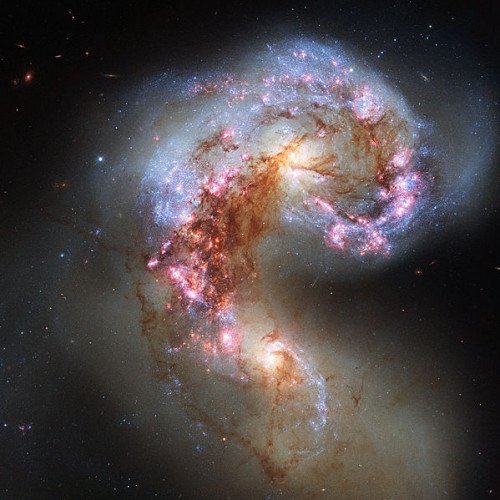"ANDROMEDA GALAXY" vs "ANTENNAE GALAXIES"

ANDROMEDA GALAXY
The Andromeda Galaxy also known as Messier 31, M31, or NGC 224 and originally the Andromeda Nebula (see below), is a barred spiral galaxy approximately 2.5 million light-years (770 kiloparsecs) from Earth and the nearest major galaxy to the Milky Way. The galaxy's name stems from the area of Earth's sky in which it appears, the constellation of Andromeda, which itself is named after the Ethiopian (or Phoenician) princess who was the wife of Perseus in Greek mythology. The virial mass of the Andromeda Galaxy is of the same order of magnitude as that of the Milky Way, at 1 trillion solar masses (2.0×1042 kilograms). The mass of either galaxy is difficult to estimate with any accuracy, but it was long thought that the Andromeda Galaxy is more massive than the Milky Way by a margin of some 25% to 50%. This has been called into question by a 2018 study that cited a lower estimate on the mass of the Andromeda Galaxy, combined with preliminary reports on a 2019 study estimating a higher mass of the Milky Way. The Andromeda Galaxy has a diameter of about 220,000 ly (67 kpc), making it the largest member of the Local Group in terms of extension, if not mass. The number of stars contained in the Andromeda Galaxy is estimated at one trillion (1×1012), or roughly twice the number estimated for the Milky Way.
Statistics for this Xoptio

ANTENNAE GALAXIES
The Antennae Galaxies (also known as NGC 4038/NGC 4039 or Caldwell 60/Caldwell 61) are a pair of interacting galaxies in the constellation Corvus. They are currently going through a starburst phase, in which the collision of clouds of gas and dust, with entangled magnetic fields, causes rapid star formation. They were discovered by William Herschel in 1785. The Antennae Galaxies are undergoing a galactic collision. Located in the NGC 4038 group with five other galaxies, these two galaxies are known as the Antennae Galaxies because the two long tails of stars, gas and dust ejected from the galaxies as a result of the collision resemble an insect's antennae. The nuclei of the two galaxies are joining to become one giant galaxy. Most galaxies probably undergo at least one significant collision in their lifetimes. This is likely the future of our Milky Way when it collides with the Andromeda Galaxy. Five supernovae have been discovered in NGC 4038: SN 1921A, SN 1974E, SN 2004GT, SN 2007sr and SN 2013dk. A recent study finds that these interacting galaxies are less remote from the Milky Way than previously thought—at 45 million light-years instead of 65 million light-years. They are located 0.25° north of 31 Crateris and 3.25° southwest of Gamma Corvi.